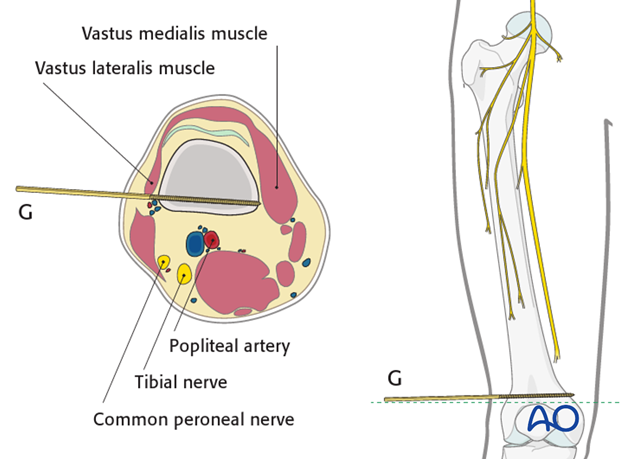Locations for pin placement in the femur
1. General considerations
The safest anatomical zones for pin insertion are the anterolateral and direct lateral regions of the femur.
Anatomy
The diaphysis of the femur is surrounded by a thick muscular envelope. The major neurovascular structures are located medially and, therefore, the femur can be safely approached over the anterolateral region.
Overall neurovascular status of the limb
For the pin insertion, the state of the soft-tissue envelope of the femoral shaft has to be considered (areas of crush injuries, or areas of extensive soft-tissue damage should be avoided, in order to minimize the risk of subsequent pin-track infection).
Conversion of temporary external fixator to nailing, or plating
Care should be taken for pin placement in cases where the external fixator is used as a temporary device and where the external fixator is to be converted either to an intramedullary nail, or a plate fixation, at a later stage.
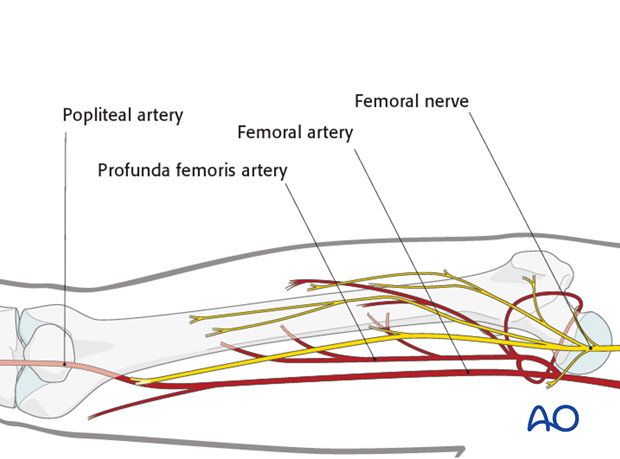
2. Safe zone proximal third
With the patient supine, the greater trochanter is palpated and, depending on the fracture configuration, the pin is directed through vastus lateralis, either aiming towards the lesser trochanter (A) …
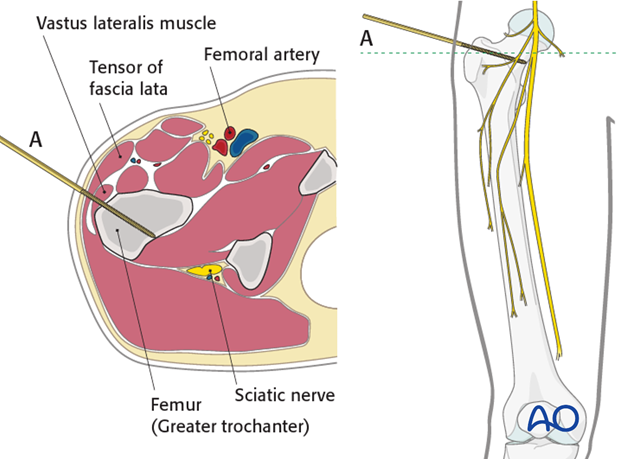
… or the femoral neck (B).
Ensure that the entry points for pin insertion will not subsequently conflict with the conversion of the external fixator to intramedullary nailing.
The safe zone for pin placement includes the area from just behind the anterior margin to the posterior margin of the lateral face of the greater trochanter.
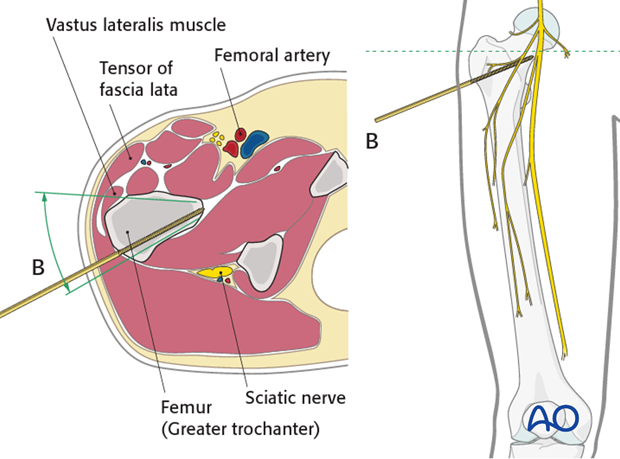
For greater stability and in cases where the external fixator is going to be the definitive method of treatment, the insertion of a third pin (C) parallel and anterior to B should be considered.
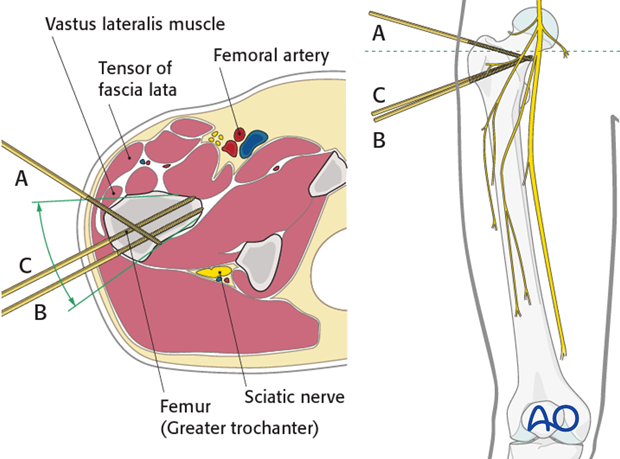
3. Safe zone in the mid shaft
The anatomy in the area between the two solid lines on the enlarged view is represented by one cross section and does not vary significantly for different levels of cross section within this zone.
Anterolateral Approach (D)
Vastus lateralis and rectus femoris are palpated with the patient in supine position. The direction of the pin should be in the plane between these two muscles, as shown in the above diagram. Care should be taken to avoid perforation beyond the femoral cortex medially to prevent injury to the neurovascular structures.
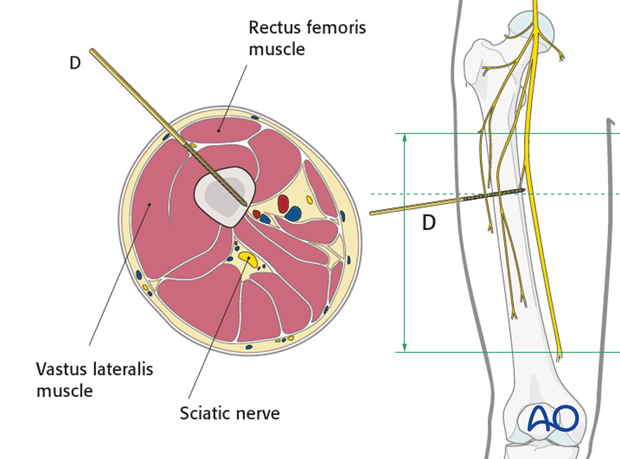
Direct Lateral Approach (E)
Vastus lateralis is palpated and the pins are inserted in the direction as shown in the diagram, aiming to purchase in both cortices.
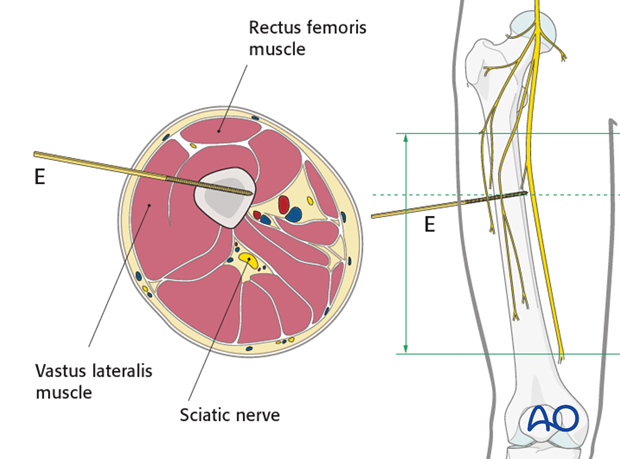
4. Safe zone in the distal third
Direct lateral approach (F)
The lateral area of the distal part of the femur is easily accessible for pin insertion. The distal part of vastus lateralis is the only structure of the soft-tissue envelope to consider. The direction of pin should follow path (F).
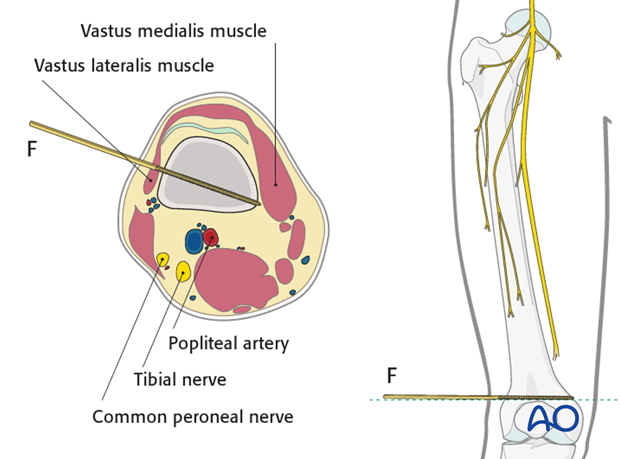
Posterolateral approach (G)
Whereas posterolateral pin insertion is also possible (G), it should be avoided so that the frame of the external fixator does not interfere with the bed mattress.
